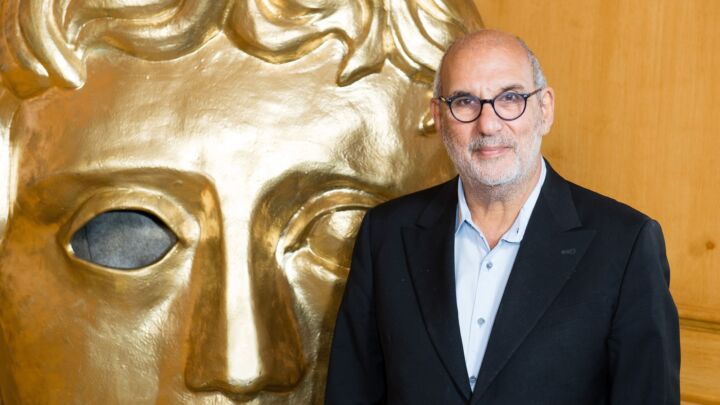The war on fat – a big, fat waste of time
Rob Lyons talks to the author of a new book that calls into question the demonisation of fatty foods.

Want unlimited, ad-free access? Become a spiked supporter.
Until recently, the advice that we should avoid fat – particularly saturated fat – was regarded as simple common sense. Heart attacks were caused by fatty deposits in our arteries, right? It was obvious that these must have in turn been caused by the heavy, saturated fat in our diets. Obesity is excess storage of fat, so it must obviously be caused by eating fat. So all the fatty treats we once loved were replaced by boring, low-fat alternatives. Bacon and eggs were replaced by Shredded Wheat and All Bran; fatty steaks were replaced by dull, dry low-fat chicken breasts. Butter was replaced by odd-tasting, low-fat vegetable-oil spread. The pleasure of full-fat milk was skimmed away, to be replaced by a thin, insipid white liquid. But if the joy of eating was diminished, at least we could rest assured that we would all be slimmer and healthier in the long run.
But in recent years, the advice to eat a low-fat diet has increasingly been called into question. Despite cutting down on fatty foods, the populations of many Western countries have become fatter. If heart-disease mortality has maintained a steady decline, cases of type-2 diabetes have shot up in recent years. Maybe these changes were in spite of the advice to avoid fat. Maybe they were caused by that advice.
The most notable figure in providing the intellectual ammunition to challenge existing health advice has been the US science writer, Gary Taubes. His 2007 book, Good Calories, Bad Calories, became a bestseller, despite containing long discussions on some fairly complex issues to do with biochemistry, nutrition and medicine. The book’s success triggered a heated debate about what really makes us fat and causes chronic disease.
Into this controversy comes The Big Fat Surprise by Nina Teicholz, which examines both the history and the merits of the advice to avoid fat – saturated fat, in particular. Teicholz, a food journalist, was originally intending to write a book on a much narrower subject: trans fats. As Teicholz says, in the early twentieth century, it became possible to mass-produce vegetable oils. These are generally made up of polyunsaturated fats (1). These vegetable oils were cheaper than animal fats, like lard, which had been used before, but they had serious disadvantages in terms of texture and shelf life. Polyunsaturated fats are liquid rather than solid and much more reactive than saturated fats and so spoil more quickly. In order to tackle that problem, a process called hydrogenation was used to make these vegetable oils more saturated, causing them to solidify. By adding different amounts of hydrogen, different qualities could be created in the resulting oil, which is then described as ‘partially hydrogenated’.
The trouble is that these partially hydrogenated oils contain trans fats – chains with chemical bonds that are the ‘wrong’ way round. These trans fats have been linked to a variety of health problems and are now largely being phased out. But how they got into our food is an interesting story in itself. As Teicholz tells me over Skype from New York, it soon became clear that there was a bigger story, way beyond trans fats, to be told. ‘I spent over a year investigating that book, talking to dozens and dozens of insiders in the food industry. I became extremely well-networked among oil chemists just trying to understand the trans fats story and understanding that industry, which is extremely closed. It’s a tiny club of all-male oil chemists… It was really interesting how hoodwinked these scientists were in the Fifties that they thought that these just-invented foods could restore people to their previous state of health. And there are lots of interesting angles to that whole story. The embrace of polyunsaturated vegetable oils to begin with, how trans fats were ramped up to become the backbone of the food industry, and how the food industry had to back out of trans fats in the last eight years and went back to using those oils.’ Teicholz argues that the fashion for polyunsaturated fats has been misplaced. Indeed, when heated up for frying, polyunsaturated fats could be downright dangerous.
The most talked-about aspect of Teicholz’s book is her discussion of the evidence against saturated fat. In the Fifties, a well-known American researcher, Ancel Keys, came to the conclusion that cholesterol was responsible for heart disease and, in turn, that the consumption of saturated fat, mostly from animals, was to blame for boosting cholesterol levels. Yet the evidence for these claims was shaky from the word go. So how did Keys manage to make his views the official ones?
Teicholz tells me that the answer lies in Keys’ unshakable moral certainty, which found fertile ground in a medical and scientific establishment spooked by the rapid rise of heart disease: ‘Before Keys got on the nutrition committee of the American Heart Association, it was very hesitant about jumping to any kind of conclusions while at the same time acknowledging the enormous pressure to do so, given that the entire nation was focused on heart disease. It was a terrifying epidemic. President Eisenhower was out of the Oval Office for 10 days [following a heart attack in 1955]. This was an all-consuming panic for all the people that ran the country. All the people in science, it was their colleagues who over the previous 30 years had started dropping like flies. There was tremendous public pressure to find some kind of solution. It was into that vulnerable setting that Ancel Keys stepped. It was just this perfect storm of his oversized, highly aggressive personality meeting this vulnerable time in America.’
Teicholz never met Keys, but she has met one of his leading supporters and apostles, Jeremiah Stamler: ‘You could see why people would just fold in their presence. It’s like being in the presence of a gale-force wind, the power that comes at you. In Jerry Stamler’s case, he’s also profane and there’s this supreme self-confidence that he brings…There was a very aggressive tenor to the whole nutrition conversation back then. It was almost like internet manners, pre-internet!’
Once the politically astute Keys had packed the nutrition committee of the AHA and got its backing for the advice to avoid saturated fat, the war on meat and dairy could begin. But a major turning point came in 1977 when the Senate Select Committee on Nutrition, led by Democratic senator George McGovern, held hearings on the issue. The result was a set of guidelines, Dietary Goals for the United States, which promoted the consumption of ‘complex’ carbohydrates, and reductions in the consumption of fat in general and saturated fat in particular.
By 1980, this report had been worked up into government-backed guidelines – around the same time that obesity appears to have taken off in the US. The McGovern Report inspired all the familiar diet advice around the world that we’ve had ever since, and led to major changes in what food manufacturers offered. Out went fat, though unsaturated fat and hydrogenated oils were deemed less bad than saturated fat, so vegetable oils and margarines became more popular. In came more carbohydrate and more sugar, to give those cardboard-like low-fat ‘treats’ some modicum of flavour.
Yet two recent reviews of the evidence around saturated fat – one led by Ronald Krauss, the other by Rajiv Chowdhury – suggest that saturated fat is not the villain it has been painted as. (The latter paper, in particular, sparked outrage.) As for fat in general, Teicholz tells me: ‘There was no effort until very late in the game to provide evidence for the low-fat diet. It was just assumed that that was reasonable because of the caloric benefit you would see from restricting fat.’ Yet a diet low in saturated fat is still the standard prescription. For example, the British Heart Foundation (BHF) (the UK equivalent of the AHA) still suggests consuming unsaturated fat rather than saturated fat – though at least the BHF is now suggesting that more research should be done.
This mad, mad story of the battle over fat is not actually that new, though Teicholz adds new details to it. But there is much more to Teicholz’s book than that. Three things stand out.
First, there is her discussion of the Mediterranean Diet. Although mentioned in a cookbook by Keys in the early Seventies, the idea was first actively researched by two researchers in the Eighties – one Greek, one Italian. But it was when the idea got the backing of Harvard University medical researchers that it really took off. Now, it seems like a no-brainer that the kind of food served on a balmy Italian or Greek terrace, with lashings of olive oil, plenty of fresh vegetables and a substantial side order of wine, is the healthiest way to eat. At the very least, it was a relief: olive oil was the healthy fat that you were allowed to enjoy. But in truth, the ‘Mediterranean Diet’ doesn’t bear much relation to what many Mediterraneans actually eat. Diets vary substantially across the Mediterranean countries – and even within those countries. In reality, the Mediterranean Diet is a construct, a rose-tinted version of reality tailored to the anti-meat prejudices of American researchers.
The second thing that sets The Big Fat Surprise apart is its tale of how the other major backer of the Mediterranean Diet was the olive-oil industry. Conferences, funded by the industry and organised by an American organisation called the Oldways Preservation and Exchange Trust, would be staged in Mediterranean countries, with idyllic climates and lots of lovely, olive-oil-heavy food. Swooning researchers were literally wined and dined into going along with promoting the benefits of olive oil. But it is questionable just how traditional the consumption of olive oil really is. It certainly only became a major part of British and American diets over the past 20 years or so. Even in Greece, it seems olive oil had functions that were more ceremonial than dietary until perhaps 200 years ago. One French historian, quoted by Teicholz, says: ‘Less than 100 years ago, ordinary people in many parts of Greece ate far less oil than today.’ In any event, the notion that this is a battle between the longstanding food culture of peasant societies and an unnatural diet forced on us by big bad corporations in the West is far too black and white.
Which leads us to an important third point made by Teicholz: that the blame for our current dietary problems cannot solely, or even mainly, be placed at the door of big food corporations. Teicholz writes about how she discovered that ‘the mistakes of nutrition science could not be primarily pinned on the nefarious interests of Big Food. The source of our misguided dietary advice was in some ways more disturbing, since it seems to have been driven by experts at some of our most trusted institutions working towards what they believed to be the public good.’ Once public-health bureaucracies enshrined the dogma that fat is bad for us, ‘the normally self-correcting mechanism of science, which involves constantly challenging one’s own beliefs, was disabled’.
The war on dietary fat is a terrifying example of what happens when politics and bureaucracy mixes with science: provisional conclusions become laws of nature; resources are piled into the official position, creating material as well as intellectual reasons to continue to support it; and any criticism is suppressed or dismissed. As the war on sugar gets into full swing, a reading of The Big Fat Surprise might provide some much-needed humility.
Rob Lyons is a spiked columnist. His book, Panic on a Plate: How Society Developed an Eating Disorder, is published by Societas. (Buy this book from Amazon (UK).) Read his blog here.
Big Fat Surprise: why butter, meat, and cheese belong in a healthy diet, by Nina Teicholz, is published by Scribe Publications. (Order this book from Amazon(UK).)
(1) Fats are mostly made up of chains of carbon atoms linked to hydrogen atoms. Where all the carbon atoms are linked to at least two hydrogen atoms, the chain is said to be ‘saturated’. If one pair of carbon atoms has a ‘double bond’ to each other and has only one hydrogen bond each, the fat is ‘monounsaturated’. If more than one pair of carbon atoms has just one hydrogen link each, the chain is ‘polyunsaturated’.
You’ve read 3 free articles this month.
Support spiked and get unlimited access.
Help us hit our 1% target
spiked is funded by readers like you. It’s your generosity that keeps us fearless and independent.
Only 0.1% of our regular readers currently support spiked. If just 1% gave, we could grow our team – and step up the fight for free speech and democracy right when it matters most.
Join today from £5/month (£50/year) and get unlimited, ad-free access, bonus content, exclusive events and more – all while helping to keep spiked saying the unsayable.
Monthly support makes the biggest difference. Thank you.









Comments
Want to join the conversation?
Only spiked supporters and patrons, who donate regularly to us, can comment on our articles.